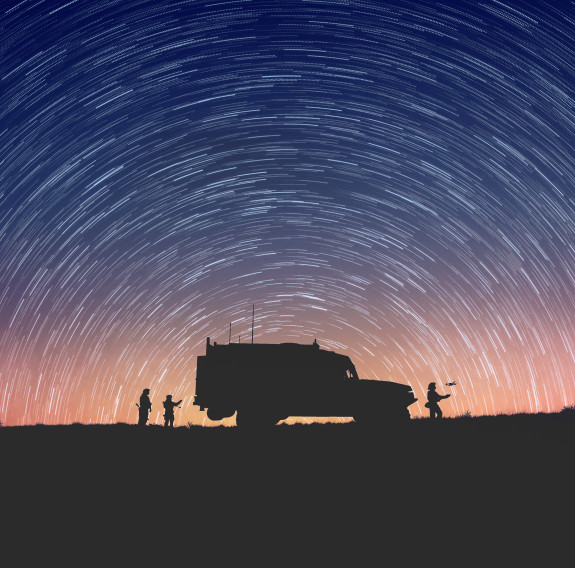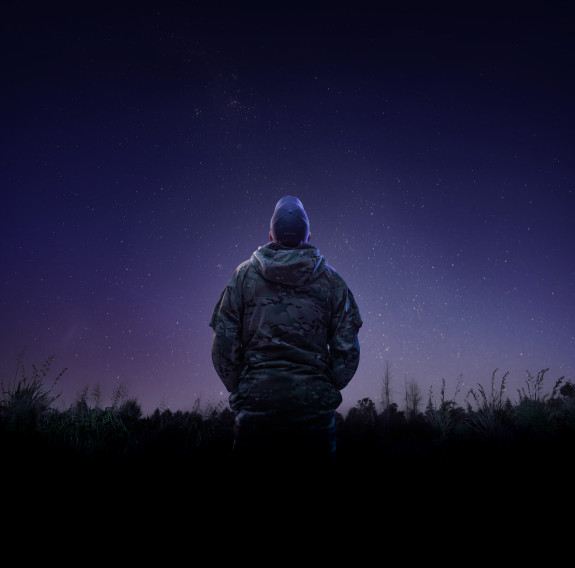LOOK TO THE STARS
The space domain has become so significant to living in the modern world, the Royal New Zealand Air Force has stood up a squadron dedicated to it. In doing so, New Zealand has joined the cast of countries looking to the stars to ensure security on Earth.
07 August, 2025
The NZDF in the Space domain
Space - not so much the final frontier, but an environment to help enable us to live in the modern world. Checking the weather, doing banking, sending a text or getting directions all relies on the stability of satellites orbiting the earth.
The New Zealand Defence Force (NZDF) takes it a step further, making use of technology to be aware of operational areas, including in disaster relief situations, operational intelligence, maritime domain awareness, secure global communication, global navigation, and awareness of activities in space.
Wing Commander Matt Tristram is the Commanding Officer of the Royal New Zealand Air Force’s (RNZAF) newest squadron, No. 62 Squadron. He said the NZDF is reliant on partner space-based capabilities to enable operations, including communication, navigation, weather, missile warning and intelligence.
We are already reliant on the space domain to enable warfighting, but our reliance on space systems also makes us vulnerable to threats, which is why we need to raise awareness around the topic. Space is an increasingly contested domain.
No. 62 Squadron’s home at
The suburb of Whenuapai is home to RNZAF Base Auckland, our largest and northernmost operational air base. Base Auckland is located north west of Auckland City on the upper western reaches of the Waitematā Harbour.
It is also part of the United States-led multinational force Operation Olympic Defender, incorporating Five Eyes partners plus France and Germany, as well as the Combined Space Operations Initiative, which includes Italy, Japan, Norway, France and Germany.
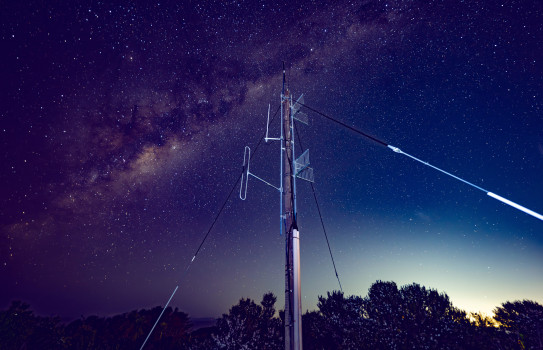
The squadron will increase the country’s space situational awareness. It will keep an eye on a variety of activities in space varying from naturally occurring space weather events such as solar flares that, if coupled with a burst of plasma and magnetic field released from the sun, could impact the electricity grid. The team would also look at any interference with satellites by other nations that could impact numerous industries including air traffic control, banking, communications and the agriculture sector.
With an increasingly unstable international environment, threats and challenges are affecting our interests in space as well as down on Earth, WGCDR Tristram said.
“The growing importance of space-based services is being matched by the development of capabilities that could threaten them. This has increased the importance of space as an operational military domain, both for the security of space itself, but also for its importance in enabling operations across all other domains.
“The NZDF requires a modern combat-capable force, and space systems are a critical enabler. It's appreciating that space-based systems such as communications - ISR (intelligence, surveillance, reconnaissance) and GPS - are critical to our mission effectiveness and combat lethality.”
“Above all we want a safe, secure, stable and sustainable space domain. We want assured freedom of access in space that benefits national security in the broadest sense.”
And for any imminent aviators eyeing a future in space operations, WGCDR Tristram said their next efforts are being put toward ensuring a career path is available to enter the trade.
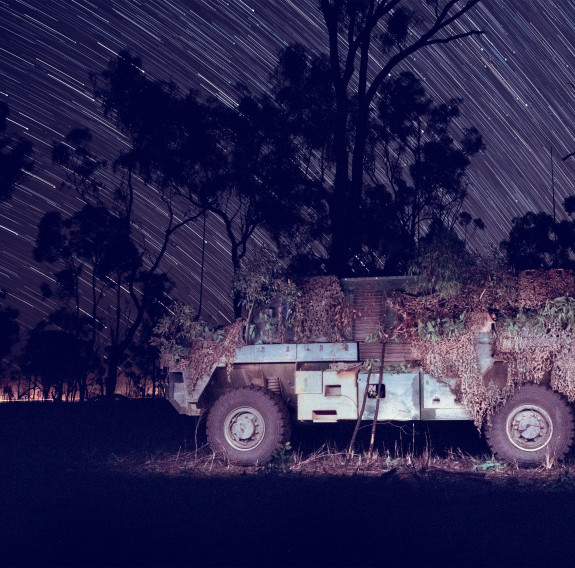
What our strategic partners expect from us
New Zealand is small, but we can contribute a mighty load when needed. With our entrance into space operations, New Zealand joins just 11 other countries with active rocket launch capabilities.
“No one country can monitor space by themselves and New Zealand is able to contribute using our unique geography in the Pacific, of being a land mass in the middle of a large ocean for ground-based sensors,” WGCDR Tristram said.
“We're not going to be as big as everybody else, but we want to make sure we're doing something that's the right size and scale-appropriate. We are concentrating making space real for the NZDF and New Zealand, from understanding the threats and making sure we’re mitigating them. That means enhancing NZDF operations through space.”
"We're not going to be as big as everybody else, but we want to make sure we're doing something that's the right size and scale-appropriate."
Commander United States Space Command General Stephen Whiting, also the commander of multinational force Operation Olympic Defender, recently visited the squadron. He said the importance of the space domain continued to rise for both nations and the threats emerging in that area were also on the rise.
“It's been exciting to watch New Zealand develop its space capabilities over the last decade with Rocket Lab and it has the world's third greatest number of launches in a year behind the United States and China.
“How we defend our nations is becoming more and more dependent on space. Our two countries bookend the Pacific Ocean and when we cooperate, we can get a better picture of what's happening in space and collectively think about how we address the threats that are ever increasing.”
As the NZDF continued to build its space capabilities the United States and New Zealand would have opportunities to partner together on the development of doctrine and potentially training that benefitted both nations, Gen Whiting said.
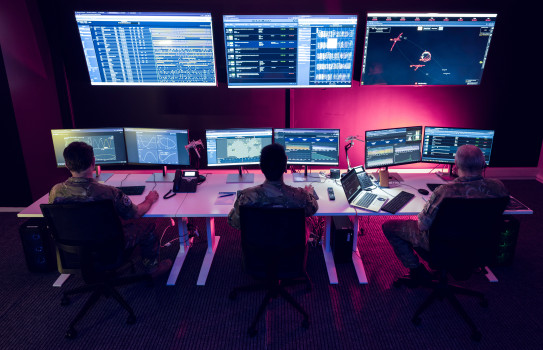
What kit do we use and do they spot UFOs?
As part of the JCO, No. 62 Squadron personnel direct providers on how to use a number of different types of sensors, Flight Lieutenant Dave Evans said.
They include the regular optical telescopes; infrared telescopes that tracks objects during the day; passive radio frequency, which tracks the electromagnetic emissions from satellites; and radars such as one based in the South Island and owned by LeoLabs.
"We've seen loads of them. Unfortunately they're not little green men in spaceships."
Tracking satellites is a fascinating business and especially interesting when they do not appear where they are expected to and the team needs to understand if the satellite is being moved for untoward reasons, or if it’s just trying to dodge other objects in orbit, FLTLT Evans said.
“Once things in orbit get above a certain height they will continually move and they're going incredibly fast – about 7km per second. And it’s getting pretty crowded up there with thousands of satellites and space junk from rocket parts.”
How about UFOs?
“We’ve seen loads of them. Unfortunately they’re not little green men in spaceships. But there are objects floating around up there and we sometimes don't know what they are. It could be space junk, it could be something nefarious or it could be a rock or an asteroid.”
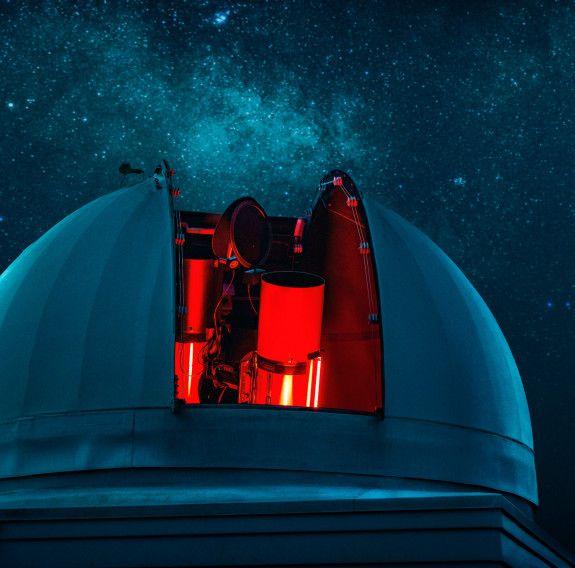
Defence Science Technology telescope
A little over half an hour’s drive north of Base Auckland sits the Defence Science and Technology telescope and No. 62 Squadron has been able to put it to good use. Two personnel have been trained to operate it and at the end of last year ran a number of tests collecting observations of satellites.
“That project helped inform the Defence Capability Plan,” Space Programme Operations Lead Squadron Leader Derek Bezuidenhout said.
The most distant human-made moving object the telescope can pick up is the James Webb telescope, which is 1.5 million kilometres away. To put that into context, the moon is 384,000km away.
“For example, if you were to point the telescope to Mt Ruapehu at night, it could see a candleflame.”
There are three main orbits around the earth, low earth orbit, medium and geosynchronous orbit that satellites move in.
“If it's low Earth orbit, about 500km away, the telescope can pick up a pretty tiny object, but it’s harder to pick up a small object in the geosynchronous orbit, which is about 36,000km away,” SQNLDR Bezuidenhout said.
“The goal is to be able to use the telescope in future operations.”
Right now the team is developing the New Zealand Space Operations centre, which will be capable of communicating with partner nations and NZDF assets.
“We've done a number of trials with those assets, developing procedures to enhance their operations by providing them with information such as which satellites are potentially passing over them during critical phases. Risks coming from space could include satellites jamming communications back to our headquarters, or them being tracked,” he said.
Flight Lieutenant Dan Robinson is an integral part of future missions. He is currently studying at Auckland University, learning how to fly satellites and getting payloads into orbit. So far the NZDF has sent two payloads into orbit, with the latest hosted on a United States research satellite, launched into orbit aboard a SpaceX Falcon-9 rocket from California.
The NZDF payload will generate data over a two-year period and will be used to inform New Zealand defence space policy considerations and potential future research work. Space Operations Centre Coordinator Flight Sergeant Gareth Jenner explains that payloads are attached to a satellite bus, which can carry dozens of them, often from different nations.
"As prices of space technology reduce, one day New Zealand might be able to operate its own sovereign satellite bus and payload.”
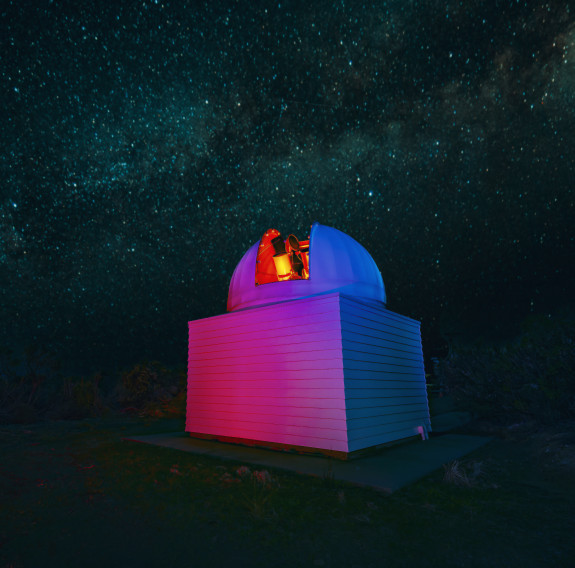
Will there be Star Wars one day?
“There is already competition in space. It’s not a matter of if, but when competition escalates. Nations need to continue to provide security for their citizens operating in the space environment,” Flight Lieutenant Dave Cresswell said.
“Space now is like the aviation industry in the 1940s and 50s. As in those days with aviation, the players involved in space now are militaries, governments, leading edge commercial companies, and wealthy tourists.
“The aviation industry today is affordable and accessible to most people and industries and it has become normalised in human society and space is very much heading that way as well.”
Industries are making breakthrough advancements bringing costs right down, which increases commercial activities in space, he said.
“As you increase commercial activity, governments will have to start considering how they protect the businesses that are their constituents. For instance, New Zealand businesses wanting to operate in space want to have that security that they're not going to be harassed by nefarious activities.
“So as that evolves, the security aspect of that will continue to evolve.”
"It’s becoming increasingly possible for settlements to be set up on the moon."
“They just need to solve the logistical problems. It’s a bit like living in Antarctica, space is a hostile environment and right now everything needed to survive is brought there and that includes oxygen.”
It’s not far-fetched to think that once those problems are solved then two-way trade between Earth and the moon is possible, he said.
“It's just some of the technology isn't there yet. We're very capable of adapting to extreme climates, but until recently living somewhere like the moon has always been seen as science fiction rather than science fact.”
FLTLT Cresswell said it was exciting to be part of the first step in working in the space domain in the new squadron.
“It's very, very challenging, but also rewarding that the stuff that we're doing now is going to have a great impact for generations. No. 62 Squadron's going to be around for a very long time - my grandkids will be talking about it and I’ll be a name on a wall here.”
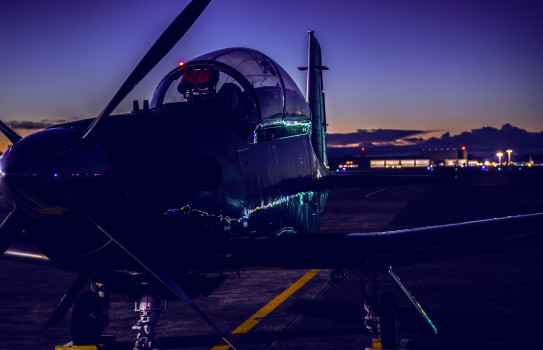
History behind the name
There is thoughtful consideration behind naming a squadron and it was no different for No. 62 Squadron. The number harks back more than 80 years to World War II, with a hat-tip to the Royal New Zealand Air Force’s radar squadron. Corporal Phil Holdstock has a passion for Air Force history and took it upon himself along with FLTLT Cresswell to find a fitting number for the new squadron.
“We found that No. 62 Squadron along with the radar flight environment, was closely aligned with what we were doing. In particular, the squadron filled a radar gap in the Pacific for the allied forces.
“Our space programme started out filling a gap in the Pacific for space awareness, so the synergy was obvious and logical.”
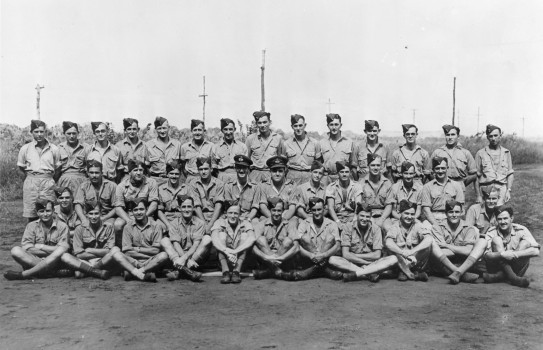
No. 52 Radar Unit, Guadalcanal, 1943
At the start of 1943 radar units numbering 52-59 were deployed to Solomon Islands to install and operate a ground-based interception unit. By August that year, No. 62 Squadron was created to bring all the units under one command and become a focal point for allied forces in resisting the Japanese arrival in the Pacific.
The squadron, using cutting edge technology of the time, provided crucial advance warning of enemy attacks and conveyed the location of enemy aircraft. By the middle of 1944 there was effectively no Japanese air presence in the Pacific and the squadron was disbanded in October that year. The rapid growth of the squadron and use of technology nicely mirrors the NZDF’s space operations, CPL Holdstock said.
“This is an exciting and proud moment. I like that we're going to be able to continue the legacy of the guys who started out - even though they were only around for a short time, their legacy is going to grow.”
